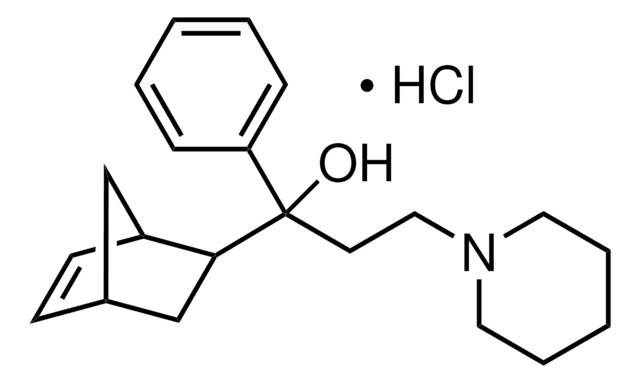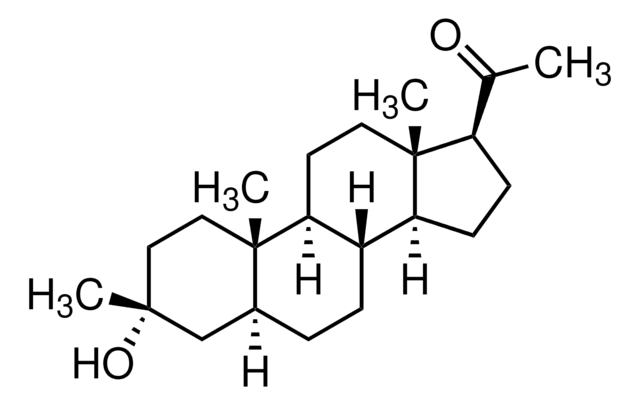B5311
Biperiden hydrochloride
≥98% (HPLC), powder
Synonyme(s) :
1-(5-Bicyclo[2.2.1]hept-2-enyl)-1-phenyl-3-(1-piperidinyl)propan-1-ol hydrochloride, Akineton, Akinophyl
About This Item
Produits recommandés
Pureté
≥98% (HPLC)
Forme
powder
Couleur
off-white
Solubilité
DMSO: >20 mg/mL
H2O: insoluble
Auteur
Abbott
Chaîne SMILES
Cl[H].OC(CCN1CCCCC1)(C2CC3CC2C=C3)c4ccccc4
InChI
1S/C21H29NO.ClH/c23-21(19-7-3-1-4-8-19,11-14-22-12-5-2-6-13-22)20-16-17-9-10-18(20)15-17;/h1,3-4,7-10,17-18,20,23H,2,5-6,11-16H2;1H
Clé InChI
RDNLAULGBSQZMP-UHFFFAOYSA-N
Informations sur le gène
human ... CHRM1(1128)
Vous recherchez des produits similaires ? Visite Guide de comparaison des produits
Actions biochimiques/physiologiques
Caractéristiques et avantages
Mention d'avertissement
Warning
Mentions de danger
Conseils de prudence
Classification des risques
Acute Tox. 4 Oral
Code de la classe de stockage
11 - Combustible Solids
Classe de danger pour l'eau (WGK)
WGK 3
Point d'éclair (°F)
Not applicable
Point d'éclair (°C)
Not applicable
Équipement de protection individuelle
dust mask type N95 (US), Eyeshields, Gloves
Certificats d'analyse (COA)
Recherchez un Certificats d'analyse (COA) en saisissant le numéro de lot du produit. Les numéros de lot figurent sur l'étiquette du produit après les mots "Lot" ou "Batch".
Déjà en possession de ce produit ?
Retrouvez la documentation relative aux produits que vous avez récemment achetés dans la Bibliothèque de documents.
Articles
Muscarinic acetylcholine receptors mediate acetylcholine actions in CNS and non-nervous tissues, crucial for cell signaling.
Notre équipe de scientifiques dispose d'une expérience dans tous les secteurs de la recherche, notamment en sciences de la vie, science des matériaux, synthèse chimique, chromatographie, analyse et dans de nombreux autres domaines..
Contacter notre Service technique









